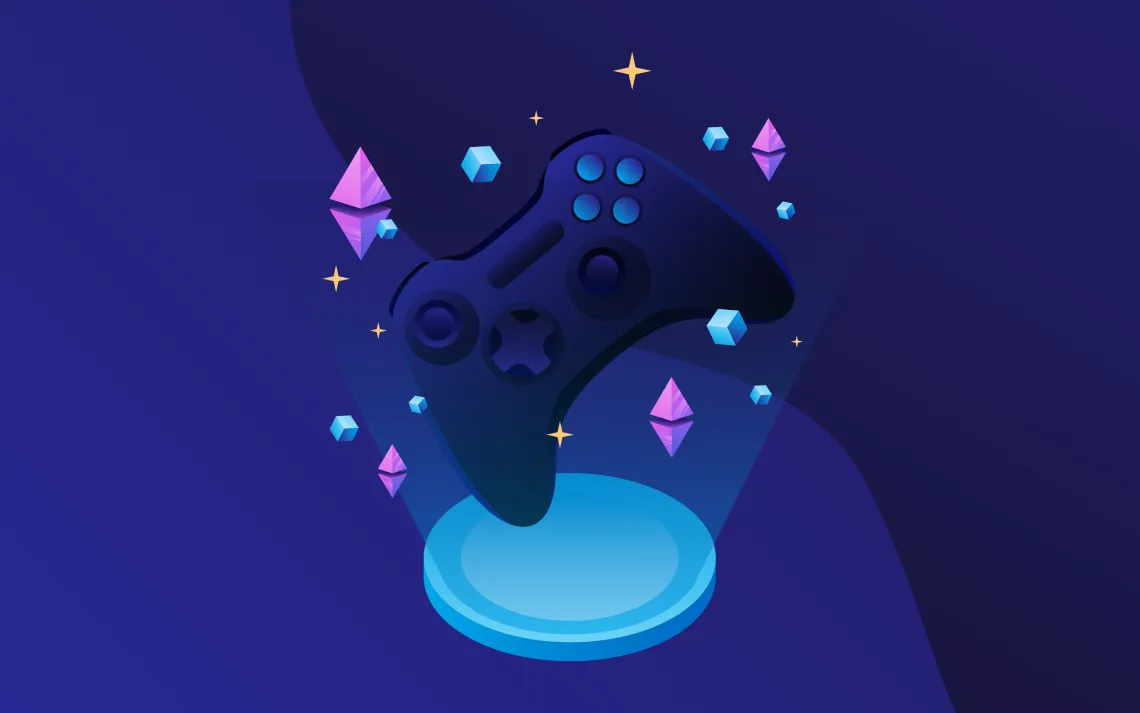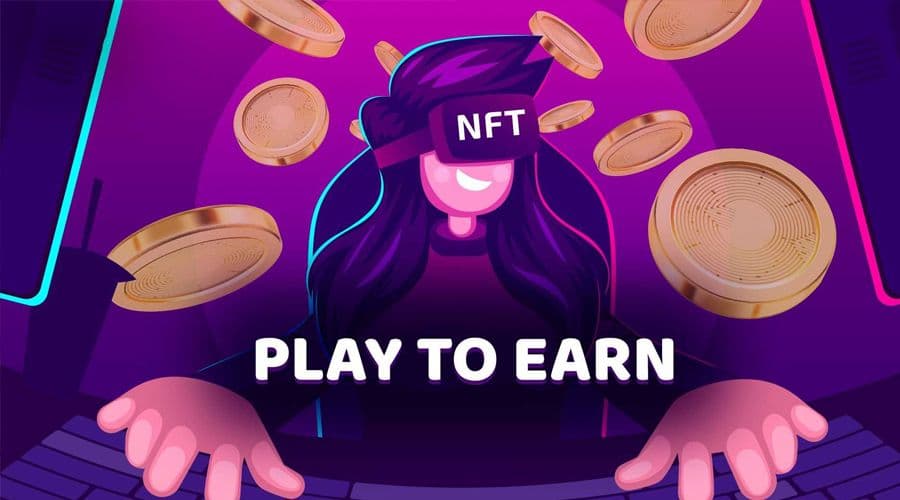In the rapidly evolving landscape of digital economies, the emergence of Play-to-Earn (P2E) business models has captured the attention of gamers, investors, and entrepreneurs alike. Unlike traditional gaming paradigms where entertainment is the primary focus, P2E introduces a groundbreaking concept where players can earn real-world value through their in-game efforts.
This innovative approach intertwines gaming with blockchain technology, enabling players to monetize their time, skill, and virtual assets. As the popularity of P2E continues to surge, understanding its intricacies becomes paramount for those curious about its potential implications on gaming, finance, and the broader digital ecosystem.
In this article, we dive into the essence of the Play-to-Earn business model. We will look at its origins, mechanics, and more. As well as the transformative impact it promises across various sectors within gaming and the future of interactive entertainment.

Key Definitions
Play-to-Earn: "Play-to-Earn (P2E) represents a genre of blockchain-based games that incorporate player-owned economies through the use of in-game assets represented by tokens and NFTs.”
Blockchain Game: "A blockchain game is any game that uses blockchain technology to enhance or rearchitect traditional video games."
NFT Game: "An NFT game is a video game that uses NFTs as a core part of their gameplay and economy. NFTs, or Non-Fungible Tokens, are 1-of-1 tokens generated by smart contracts and blockchain technology"

P2E Business Model
The Play-to-Earn (P2E) business model represents a significant advancement in the gaming industry, embracing an open economy ideology. This model offers financial rewards to players for contributing value to the game world. It is anticipated to introduce novel gaming concepts and retention strategies not previously witnessed in traditional gaming.
Over time, video game business models have evolved alongside technological advancements, catering to a diverse audience. In the past, gaming primarily occurred in local game centers using arcade machines, where players vied for high scores with pockets filled with quarters.
Today, gaming has become seamlessly integrated into our daily lives. Whether we're commuting on public transit or enjoying a moment of relaxation, our smartphones serve as convenient portals to a multitude of gaming experiences.
For those seeking more immersive gameplay, personal computers and home consoles offer a deeper level of engagement. Across all platforms, a diverse array of business models caters to the preferences of every player, ensuring accessibility and choice in how we engage with and support our favorite games.

Free-To-Play
Consumers typically acquire access to premium games by purchasing a license from digital stores or obtaining a physical copy from online or local retailers. This often involves a significant financial investment, with newly released games commonly priced at around $60. Despite the robust nature of this industry, the Free-to-Play business model has experienced substantial growth in recent years.
Under the Free-to-Play model, gamers can download and play a game at no cost, without any upfront financial commitment. However, these Free-to-Play or freemium games offer a limited experience, requiring players to make purchases to expedite their progress or acquire special items. This may involve paying for in-game currencies, additional content, or cosmetic enhancements for their characters.

Many of the leading games in the market are available for free, with titles like Fortnite generating substantial revenue through the sale of cosmetic items despite being entirely free to play. Similarly, games such as League of Legends and Hearthstone offer free access to their core gameplay, while developers monetize through additional content or cosmetic purchases.
The success of these Free-to-Play games, which have generated billions in revenue, underscores the maturity of the Free-to-Play business model. Developers have honed their strategies for monetizing Free-to-Play games effectively.
The Play-to-Earn (P2E) business model shares similarities with Free-to-Play games, often incorporating mechanics found in such titles. However, Play-to-Earn (P2E) games go a step further by allowing gamers to earn money or valuable digital assets within the game environment.

Play-To-Earn (P2E)
Empowering gamers with ownership of in-game assets and the ability to increase their value through active gameplay constitutes the core principles of the Play-to-Earn (P2E) business model. By actively participating in the in-game economy, players not only generate value for fellow players but also contribute to the overall development efforts of the game developers. As a result of their contributions, players are rewarded with various in-game assets.
These digital assets encompass a wide range, including cryptocurrencies and in-game resources that are tokenized on blockchain platforms. This synergy between the Play-to-Earn (P2E) model and blockchain technology is particularly notable, as blockchain games provide an ideal environment for fostering player ownership and asset value growth.

Under the Play-to-Earn (P2E) model, players receive rewards from the game and its developers for their dedication and time investment. For instance, in Axie Infinity, players earn Small Love Potions (SLP), which are essential for breeding new Axies.
Beyond their utility within the game, players can also trade these tokens with other players on open marketplaces. Similarly, other games like League of Kingdoms offer various resources, while the fantasy football game Sorare presents players with valuable prizes as rewards for their gameplay achievements.

Value Proposition
Fundamentally, a Play-to-Earn (P2E) game ideally aligns with the Free-to-Play model, although this isn't always the case. For example, in Axie Infinity players must initially purchase three Axies to engage in battles within the world of Lunacia. Similarly, Sorare necessitates players to invest in player cards before they can earn cards through weekly competitions.
While games like Chainz Arena and League of Kingdoms offer Free-to-Play options, certain gameplay mechanics and restrictions may prompt players to invest money into the game. Thus, while players may earn rewards, they may also incur expenses.

The development of video games entails significant costs, and these games are typically created by commercial entities. However, the Play-to-Earn (P2E) business model offers the advantage that gamers always generate value that can be monetized. Even if players need to make an initial investment to start playing, the items they acquire can always be sold.
For instance, every card in Sorare and every Axie in Axie Infinity's ecosystem can be traded. In contrast, games like Fortnite and League of Legends often see players spending money without tangible returns, effectively dissipating their value into a bottomless pit. In contrast, Play-to-Earn (P2E) models ensure that all obtained items hold intrinsic value, allowing players to potentially earn money even when they decide to step away from the game.

Final Thoughts
The emergence of the Play-to-Earn (P2E) business model represents a significant paradigm shift in the gaming industry, offering a novel approach that blurs the lines between gaming and financial incentives. While traditional gaming models often require upfront financial investments with uncertain returns, Play-to-Earn (P2E) games provide players with tangible opportunities to generate value and potentially earn money through their gameplay.
This shift towards player ownership of in-game assets, coupled with the integration of blockchain technology, not only enhances player engagement but also transforms gaming into a more sustainable and rewarding endeavor. As the gaming landscape continues to evolve, the principles of Play-to-Earn (P2E) are poised to play a pivotal role in shaping the future of gaming, fostering greater player empowerment, economic participation, and innovation within the industry.
This article was inspired by an original blog post from Hedera you can read the full post on their website here for more information.



